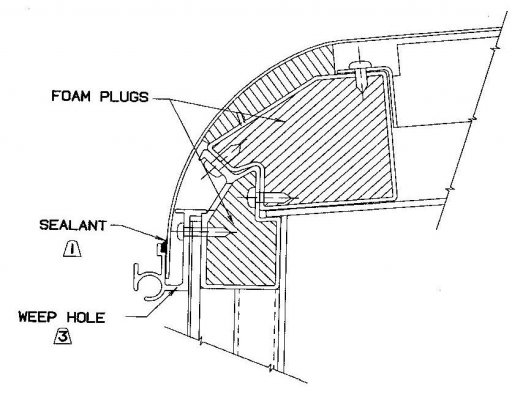TheNextBillGates
Well-known member
Hey guys,
Well, I'm stuck in the cold for a while...I have my external LP tank hooked up and we're managing to stay rather toasty! My 38J has a rear bedroom we can close the door and a small electric heater keeps us toasty at night while the coach thermostat stays at 50. During the day I crank it up to 70. If we're lucky, it gets warm enough to use the heat pump.
My issue is with condensation. As most have seen at some point, we saw moisture on the windshield and window frames. I bought a dehumidifier and sat it in the front of the coach and it has all but eliminated the excess moisture. However, certain areas of the coach are still problematic:
- In the shower, there's about 1" of wall that I can see between the top of the shower and the roof. It is VERY cold (lack of insulation I suppose) and condensates heavily during a shower.
- The closet is located on the passenger side rear corner. The top right corner (top rear corner of the coach) is VERY cold and condensates as well. This is a section at least 6" tall and 2' wide. This causes our clothes to get wet.
- The lights in the closet come through the ceiling. Condensation drips from these holes & wires and short out the closet lights. This is not a leak from the exterior, only condensation and only during the winter.
- The bottom corners of our slides are very chilly. Since Winnebago used a lot of fake wood with wood grain contact paper on it, we're getting several areas where the wood grain is peeling off due to the moisture.
In the end, I'm a little upset that the coach isn't a sealed up a bit better. But, I suppose I have a lower-end unit and it was not really designed for the brutal winter.
I was going to get a few bottles of that spray-in expanding foam stuff to seal the ceiling holes that are condensating. I was also thinking about drilling a hole or two in the closet wall where the insulation is lacking and spraying some of it in there, too. My fear is that it will expand too much and split something. Also, it'd be harder to hide the holes in the shower.
Anyone have any suggestions? Do you think the spray-in solution would work for the walls?
Well, I'm stuck in the cold for a while...I have my external LP tank hooked up and we're managing to stay rather toasty! My 38J has a rear bedroom we can close the door and a small electric heater keeps us toasty at night while the coach thermostat stays at 50. During the day I crank it up to 70. If we're lucky, it gets warm enough to use the heat pump.
My issue is with condensation. As most have seen at some point, we saw moisture on the windshield and window frames. I bought a dehumidifier and sat it in the front of the coach and it has all but eliminated the excess moisture. However, certain areas of the coach are still problematic:
- In the shower, there's about 1" of wall that I can see between the top of the shower and the roof. It is VERY cold (lack of insulation I suppose) and condensates heavily during a shower.
- The closet is located on the passenger side rear corner. The top right corner (top rear corner of the coach) is VERY cold and condensates as well. This is a section at least 6" tall and 2' wide. This causes our clothes to get wet.
- The lights in the closet come through the ceiling. Condensation drips from these holes & wires and short out the closet lights. This is not a leak from the exterior, only condensation and only during the winter.
- The bottom corners of our slides are very chilly. Since Winnebago used a lot of fake wood with wood grain contact paper on it, we're getting several areas where the wood grain is peeling off due to the moisture.
In the end, I'm a little upset that the coach isn't a sealed up a bit better. But, I suppose I have a lower-end unit and it was not really designed for the brutal winter.
I was going to get a few bottles of that spray-in expanding foam stuff to seal the ceiling holes that are condensating. I was also thinking about drilling a hole or two in the closet wall where the insulation is lacking and spraying some of it in there, too. My fear is that it will expand too much and split something. Also, it'd be harder to hide the holes in the shower.
Anyone have any suggestions? Do you think the spray-in solution would work for the walls?

